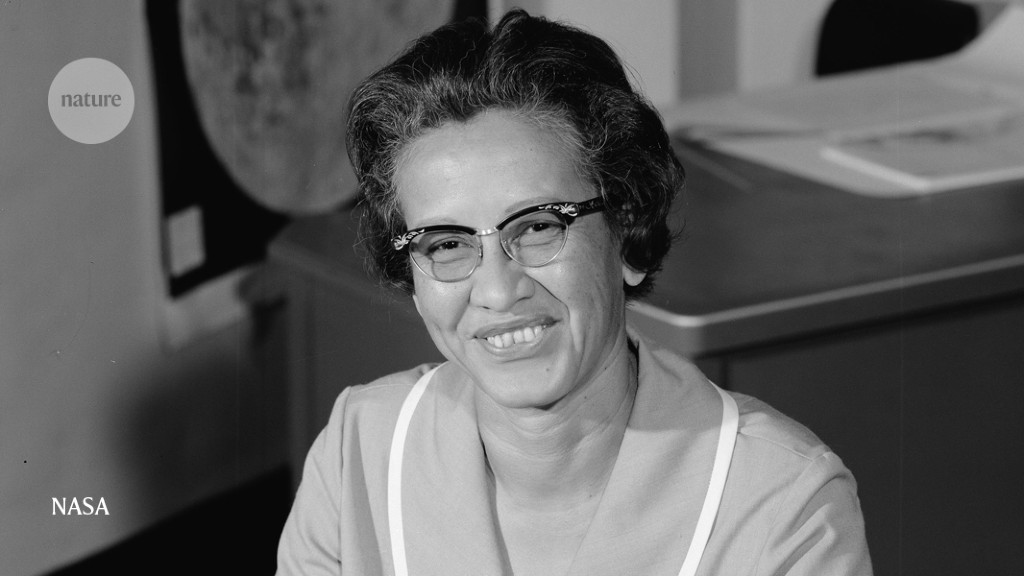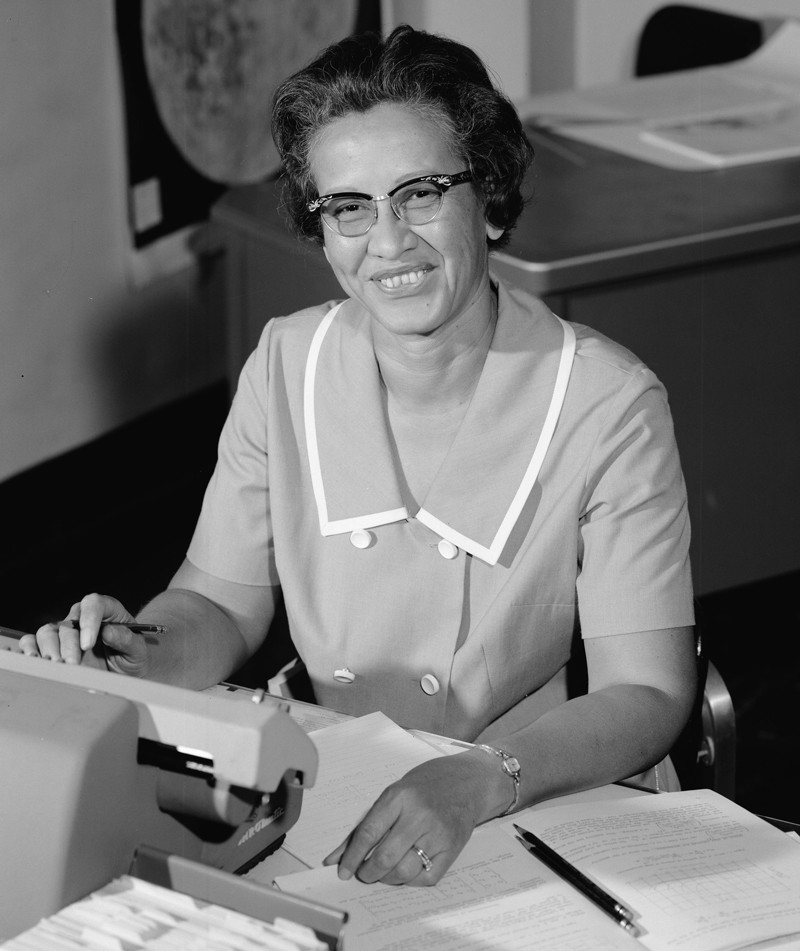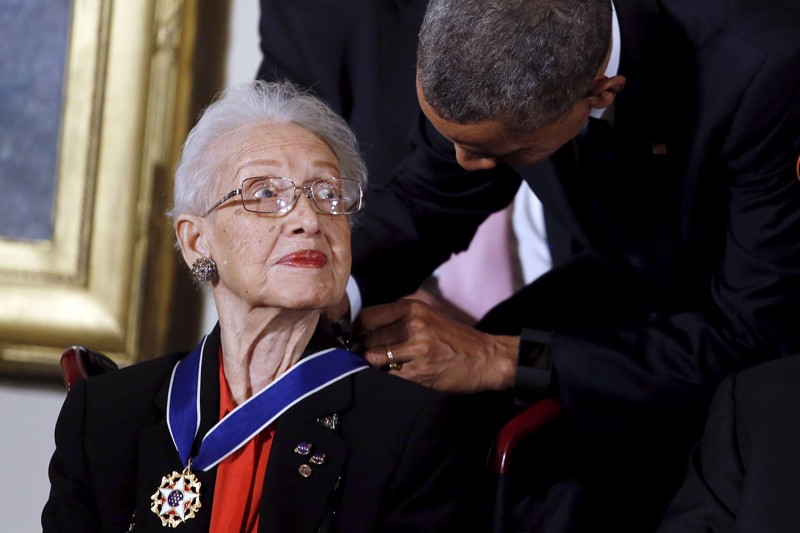My Remarkable Journey: A Memoir Katherine Johnson, Joylette Hylick & Katherine Moore, with Lisa Frazier Page Amistad (2021)
When Star Trek first aired in the 1960s, communications officer Uhura (Nichelle Nichols) seemed to be the only Black woman affiliated with space travel. Little did society know that, as mathematicians, Black women such as Katherine Johnson actually made space flight possible. Johnson, who was highlighted in the 2016 blockbuster movie Hidden Figures, died last year, aged 101. She left readers a gift. My Remarkable Journey is a masterful memoir of a life well lived. Written with her daughters and an award-winning journalist, it captures Johnson’s story against the backdrop of a dramatic century of US history.
It begins with exuberance, describing how public recognition changed her final years, from attending the Oscars in 2017 to being honoured with the Presidential Medal of Freedom in 2015 — and getting a kiss from president Barack Obama. After that, Johnson unfolds how a mathematics prodigy from White Sulphur Springs, West Virginia, became a ‘human computer’ for some of the most watched rocket launches in history. At NASA, she calculated trajectories and launch windows for the Project Mercury human space-flight programme. Meanwhile, she had to navigate her own path in an age when segregation and disenfranchisement were legal in the United States.
She entitles her chapters with life lessons — ‘Education Matters’, ‘Ask Brave Questions’, ‘Shoot for the Moon’. Johnson recognizes that she is a role model, and that few women and people of colour see their reflections in the sciences. I felt like I was sitting at the knee of a griot — a historian and storyteller — gaining years of insight into how to use idle times to prepare, to keep moving forwards when life hurts. Her down-home way of explaining science is enjoyable, too. Comparing orbital prediction with hunting, she writes: “You aim where you think the rabbit will be.”
Family support
Just as a rocket thrusts a space capsule upwards, Johnson benefited from the sacrifices of her parents. She and her three siblings moved 190 kilometres to Institute, West Virginia, to attend a school for Black pupils that went beyond primary grades. Her father, who had his own gift for numbers, taught her that she was “equal to anyone, no matter what the laws or traditions said”. This lesson stabilized her trajectory.
At 14, she entered West Virginia State College (now West Virginia State University) in Institute. There, her professor gave her a mission — to become a research mathematician. William Waldron Schieffelin Claytor was a gifted topologist whose own career was later stymied by academic racism. He prepared his protégé for her window of opportunity with one-on-one instruction in analytic geometry of space. Unknowingly, he furnished her with the boost she needed years later. Claytor exemplified the African American adage “lift as we climb”.
Born in 1918, Johnson sat ringside to the Great Depression, the cold war and the US civil-rights movement, as well as the space race. Her life weaves through this greater tapestry, providing a deeper understanding of the past century. Johnson joined the precursor to NASA — the National Advisory Committee for Aeronautics — in the summer of 1953. Even before that, she shaped history. In 1939, she and two other Black students were selected by the president of West Virginia State College, a historically Black institution, to attend the previously all-white West Virginia University in Morgantown, desegregating it nearly two decades before the Little Rock Nine did the same for a high school in Arkansas in 1957. Johnson’s path to NASA was as significant as the work she did there.
The pinnacle of the book is a story that appeared on the big screen — but Johnson’s account is more gripping. She was indeed “the girl” on whom astronaut John Glenn called to hand-check the computer’s plan for his 1962 orbit of Earth, the first by an American. Hollywood embellished the scene; Johnson doesn’t need to. A depiction of performing calculations has never been so engrossing. “I was the error checker, the last stop,” she writes. Although we know the outcome, there’s relief when the numbers agree. For one moment, a launch — and a nation — relied on Johnson’s mighty pencil.
Hidden stories
She also celebrates a world rarely seen in science-history books — that of working- to middle-class southern African Americans of the mid-twentieth century. Of course, Johnson did not live unscathed by the realities of the Jim Crow laws: she describes incidents such as her daughter being refused admission to a segregated hospital. And she experienced microaggressions intended to ‘keep her in her place’. When her white adviser at West Virginia University asks, “What are you going to do with this advanced degree?” he is enraged by what he considers an audacious comparison to himself when she says she will do the same thing as him. She recalls: “I hadn’t intended to insult him, but it did not bother me either.”
She created a full life of friends and family. She leant on her community during hardships, such as a house fire and her first husband’s death. She cultivated camaraderie with other educated Black women in her university sorority, Alpha Kappa Alpha. And she was nurtured by Black colleges. Much achievement has been forged in these key institutions, as evidenced by US vice-president Kamala Harris, who studied at the historically Black Howard University in Washington DC. Johnson illuminates this inspiring world, long overlooked by dominant narratives. Yes, she writes about the space race — but she also writes about spaces where others enabled her to thrive, and about race.
My Remarkable Journey keenly shows how Johnson overcame the gravitational pulls of gender and racial discrimination. Decades ago, after she completed her calculations for the rendezvous between the lunar and command module for the eventual Apollo mission to the Moon, she said “my part was done”. With this final, beautiful opus, it is, indeed.
Competing Interests
The author declares no competing interests.







More News
Could bird flu in cows lead to a human outbreak? Slow response worries scientists
US halts funding to controversial virus-hunting group: what researchers think
How high-fat diets feed breast cancer